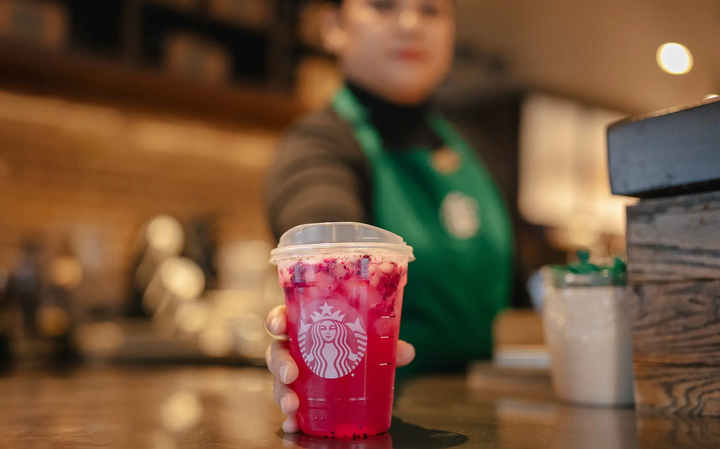New, more sustainable Starbucks cold cups are made with up to 20 percent less plastic

The tall, grande, venti and trenta cups, which debut this month, will keep more than 13.5 million pounds of plastic from landfills each year.
In the last four years, Kyle Walker has learned more about the Starbucks cold drink cup than he ever thought he needed to know. How much pressure can you apply to the top and the sides before it crumples? What’s the exact angle of a full cup right before it tips over when you slide it across the bar? What does a perfect lid-to-rim fit feel like?
And the most important question at the center of his team’s testing and research at a laboratory inside the Tryer Center, Starbucks innovation hub in Seattle: How much plastic can you remove from a cup while making sure it still feels sturdy in a customer’s hand?
Turns out, 10 to 20 percent.
This April, Starbucks is proud to announce the debut of a lineup of more sustainable cold cups in stores across the U.S. and Canada. They’re not only made with less plastic than previous cold cups, they are also projected to reduce emissions and conserve water in the production process, while streamlining the workflow for store partners (employees) by consolidating the lid combinations and simplifying storage.
The new cups – the first single-use cups designed by Starbucks in the Tryer Center specifically to be more sustainable and accessible – are part of Starbucks commitment to cut its carbon, water and waste footprints in half by 2030. Also in that timeframe, Starbucks has committed to making sure all customer packaging is reusable, recyclable or compostable.
Based on analysis of life cycle assessments, producing the new cups is projected to save, annually, emissions equivalent to taking about 5,200 cars off the road, and conserve about 2,800 Olympic-sized swimming pools of water. The new cups will keep more than 13.5 million pounds of plastic from landfills each year. And they cost less to make.
Innovation with impact
By improving the sustainability of our single-use cups, we are making progress to achieve our 2030 resource-positive goals. For example, the new cups will:
The new tall, grande, venti and trenta-sized cups use 10 to 20 percent less plastic compared to previous cold cups. Feedback from store partners and customers informed the key features. Baristas made drinks in test and store settings, rating the feel and performance of different iterations. Customers responded to surveys via QR codes.
| Type A | Type B | Type C | Type D |
| Category | 1 | 2 | 3 |
“We invented new ways to test the cup that we didn’t have before,” Walker remembers. “Like, what if we take this feature and we move it up or down? Or what if we change the shape or the radius in this very small way? We were making all these micro adjustments and when we found the optimal combination, it was a real Eureka moment!”
Accessibility features were folded in. Raised dots signify different sizes that can be felt by a swipe of the thumb, for those with low visibility. Letters are embossed on the bottom of the cup, so baristas can quickly confirm what size they’re grabbing during a busy rush when all the cups are stacked upside down. Black and white “fill lines,” indicating measurement specifications, allow for contrast against both light- and dark-colored drinks.
And crucial for partners: the tall, grande and venti cups all use the same size lid. To achieve this, the tall cup was redesigned with a wider mouth and profile, to still hold the same 12 ounces. Previously, the tall cup had multiple lid options, and the grande and venti cups shared a different lid.
The multiple lids had to be stored and stocked separately, which created clutter and took up valuable shelf space. Sleeves of the new cups will also be color-coded instead of coming in clear bags, helping with identification. The trenta size will use a different lid.